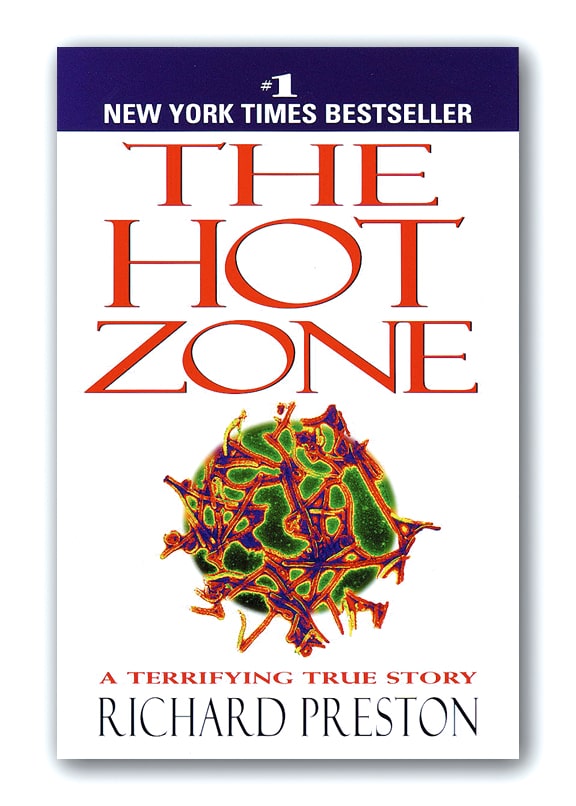Looking For Something To Worry About? How About A Rash Of Creepy Diseases?
Perhaps you’re the sort who starts worrying (at least a little) when you here that a serious new disease is making its way through some part of the United States.
You can be assured that at the same time the mass media are trying to frighten you about new diseases, they’re also trying to reassure you.
D68
Take the case of the scary new disease Enterovirus D68, which I’ll call D68 for short.
When D68 first began to break out among school students in Illinois and Missouri in August of this year, the Los Angeles Times published a major article assuring the citizens of the country’s second-largest city that it was extremely unlikely that D68 would be heading their way.
In little more than a week, D68 had spread to 12 states. In another two weeks, it had spread to 22 states. Louisiana was one of the 22.
By the end of September, D68 had spread to 38 states.
D68 is a respiratory disease. So far, it’s affected school children and been spread in schools. Children with asthma are especially vulnerable.
Symptoms of D68 are fever and difficulty with breathing. In severe cases, those with the illness must be hospitalized.
Worry stoppers: Authorities say the best way to fight D68 is with frequent hand-washing. If you have a child in school, make sure your child understands the techniques of proper hand-washing. (Lather soap on hands vigorously for 30 seconds. Don’t touch faucet handles or door handles after washing hands. If necessary, use paper towels when manipulating handles.)
If your child has asthma, don’t let him go to school if he feels sick, tired, weak or feverish. Children with asthma should definitely be taking their meds.
Although D68 hasn’t yet been found spreading outside of schools, it may be a good time to keep asthmatic children out of crowds.
Finally, remember this: although D68 is capable of killing people, as of yet, no one in the U.S. has died in this outbreak.
The Brain-Eating Amoeba
In 2014, Louisiana got its very own scary disease. And it sounds like something right out of a made-for-TV disaster film.
The disease develops when certain disease-carrying amoeba manage to work its way high up into the human sinus cavities. The amoeba have somehow evolved in such a way that they can bypass the unusual barriers that keep parasites out of the human brain. If they get high enough in the sinuses, they will go directly into the brain.
Like Ebola, the disease has a very high fatality rate — perhaps something in the neighborhood of 90 percent. Of the few U.S. residents who have contracted the disease in recent years, only three have survived.
The disease is waterborne. The amoeba can grow in public water systems whose water hasn’t been properly treated.
This summer, the amoeba were found in the public water supplies of three Louisiana parishes: St. John the Baptist Parish, De Soto and St. Bernard Parishes. The discovery of the amoeba generated worldwide news coverage.
It also created something of a statewide scare when residents in the three infected parishes were advised to keep their parish’s water out of their noses. Even the New York Times admitted that this advice from the Centers for Disease Control was “scary.”
During the month of September, water in every parish in Louisiana was tested for the presence of brain-eating amoeba. If any other areas in Louisiana are found to have infected water, that information will be reported by the media. If you can’t wait for media reports, follow the progress of the testing at the Louisiana Dept. of Health and Hospitals web site at dhh.louisiana.gov.
Worry stoppers: Infection by brain-eating amoeba is very rare. Even in the three parishes whose water has been infected, no one has yet fallen ill.
If you know you’re going to worry about this disease regardless, there’s plenty you can do. It’s getting cooler; consider this an appropriate time to end all swimming and water sports. Don’t ever submerge your head when you’re in the bathtub.
Not enough? Get swimmers’ nose plugs and ear plugs at local stores that sell such things or on Amazon or other online outlets. These items are super-cheap.
And remember, you can’t get brain-eating amoeba by drinking tap water. The parasite is only dangerous when it’s in the sinuses. It is perfectly harmless in the stomach.
Ebola
Now, let’s turn our attention to the elephant in the room. Ebola.
Ebola’s been in news headlines off and on since it first made its modern appearance 38 years ago in Africa. There’s even been a Dustin Hoffman movie about it — Outbreak, in which the Ebola-like disease is called “the Motaba virus.” Scientists point out that Ebola does not spread as fast as the disease in the film.
The fact is, strains of diseases that are much like Ebola have been around for a century. A very similar condition— Marburg — first appeared in Germany, of all places. Diseases such as Marburg and the new strain of Ebola are similar in that they both cause death by hemorrhaging.
Until recently, Ebola was a very, very rare disease. That’s all changed. Ebola’s been raging in West Africa for much of this year. But of course, here in the states, the disease first showed up on Joe Sixpack’s radar when it was reported that some patients infected with the disease would be checking into U.S. hospitals and the Centers for Disease Control in Atlanta.
When one of these U.S. patients recovered from the plague-like disease, it was announced that his blood would be used to treat another U.S. patient still infected with Ebola. That started a move by Ebola survivors in West Africa to start selling their blood. There was an immediate outcry by doctors, who pointed out the many health risks posed by such a practice.
The Ebola story has had a growth rate every bit as brisk as that of an epidemic.
On Sept. 18, the dirt-poor West Africa country Sierra Leone announced it was instituting a three-day “national lockdown” in an effort to stop the spread of Ebola. Within a week, the country’s leaders placed 2,000,000 of the country’s residents under quarantine.
On the same day, the U.N. Security Council stated that the Ebola outbreak in Africa was “a threat to international peace and security.”
And the World Health Organization stated that it believed the Ebola outbreak was the greatest threat the U.N. has ever faced, noting that the W.H.O. thinks the number of deaths from the disease is “vastly underestimated.”
The West African countries where infection rates are high are some of the poorest countries in the world and have dismal rates of health care delivery. The New York Times reports that 6,000 cases of Ebola have been reported in Liberia, Sierra Leone, Guinea and Nigeria. Deaths to date number nearly 3,000. These numbers are 10 times larger than those from the previous outbreak of Ebola that was the worst — the 1976 outbreak in Sudan (The Congo).
While all that news from the U.N. and W.H.O. was very dramatic, there was some less dramatic good news to be had as well. Sierra Leone’s three-day shutdown enabled the government to identify 130 new cases of Ebola.
There are now varying accounts of how Ebola could develop. On Sept. 22, the N.Y. Daily News reported that the World Health Organization had announced that the disease had been “pretty much contained” in Senegal and Nigeria.
However, the next day, CNN reported that the Centers for Disease control had stated that numbers of infected people in West Africa could rise to 1.4 million by the end of the year. The organization said these staggering numbers could be lowered if the international community stepped in and brought about “additional interventions or changes in community behavior” in West African countries. W.H.O. said the rapid spread of the disease was not due to the fact that the strain of Ebola was especially virulent, but, rather, the abysmal state of health care in the poverty-stricken regions. Apparently many African Ebola victims are never seeing the inside of a hospital.
Since Ebola’s been a big topic for 20 years, scientists don’t have to scramble to try to find a miracle vaccine for it. As September drew to a close, an anti-Ebola drug developed by the Tekmira company went into use in the U.S. The FDA still considers the new medicine, TKM-Ebola, an experimental drug. But it can now be administered in emergency situations by physicians in the U.S. and Canada.
Tekmira is a contractee of the U.S. Dept. of Defense — a state of affairs that is very likely to ease the use of TKM-Ebola in the U.S. The British news service Reuters reports that the drug has already been used in repeated transfusions with human patients with no serious negative side effects.
On Sept. 27, the Atlanta-Journal Constitution reported that 800 vials of TKM-Ebola have been delivered to the World Health Organization (presumably for use in Africa). The same story reported that 10,000 doses of a second experimental vaccine made in the U.S. would be ready by the end of the year.
The best theory going is that Ebola originated by infected bats, who may, in turn, have infected food eaten by people. Ebola is transmitted through bodily fluids. The disease can survive on inert surfaces. For instance, if someone touched a glove with infected saliva on it, it is possible that the person could contract Ebola.
Worry stoppers: If you don’t want to get Ebola, don’t go to West Africa. All five outbreaks of Ebola that have occurred have taken place in Africa.
Remember this key fact: Not one person has ever contracted Ebola in the United States.
Malaria
Liberia hasn’t just been the source of Ebola. A cargo ship from Liberia was recently discovered to be carrying passengers who were infected with malaria. The ship docked in New Orleans on Sept. 18.
The Centers for Disease Control found that two people on the boat tested positive for malaria. All passengers tested negative for Ebola. Everyone on the boat was hospitalized in the greater New Orleans area.
Worry stoppers: This is more of a news story than a disease concern. Malaria is transmitted by mosquito bite. It is not contagious.
Dengue And Chikungunya
There’s been some recent Louisiana press about the possibility that the potentially serious diseases of dengue and chikungunya might be contracted in Louisiana one day in the near future.
While this is another case of a story that’s mainly about news and not any real likelihood of illness, let’s check it out nonetheless.
These two similar conditions are transmitted by mosquito, just as malaria is. There’s a very small (one half of one percent) percent fatality rate among those who contract dengue. Symptoms include fever, severe joint and muscle pain and blood platelet dysfunction.
In the extremely advanced stage, the disease can cause internal bleeding. Treatment at this stage involves “aggressive fluid administration” says the Centers for Disease Control.
This year, 10 Louisianans have contracted chikungunya and one has contracted dengue.
Worry stoppers: Every Louisianan who contracted these diseases got them while he or she was overseas. Both conditions thrive in hot climates. One can get them from mosquitos in the Caribbean, South America, Africa, Southeast Asia and even Europe. Those who are truly concerned about the diseases should be especially careful to avoid trips to the Caribbean.
The same mosquitos that transmit the disease can live in the hot southern states of the U.S.A. There have been a few cases in Key West, Fla., and places in Texas that border on Mexico.
If you do travel to any of the areas in question, you can increase your chances of avoiding this disease by reducing your contact with mosquitos. See tips for ways to do this in the section on West Nile Virus later in this story.
In the extremely unlikely event that you contract dengue or chikungunya, don’t take aspirin, as that might increase the remote possibility of internal bleeding.
Brazil has begun to intentionally introduce large numbers of healthy, uninfected mosquitos within its borders to see if such a move brings the rate of dengue down. The world will be watching to see what effect this move has on the transmission of the disease and whether it provides a new alternative treatment.
West Nile Virus
West Nile Virus, which is transmitted via mosquito, remains a perennial concern in Louisiana. As of mid-September, a total of 92 people in the state had been diagnosed with the condition. Of these, 41 have experienced serious nervous system infections. So far, one Louisianan has died from the condition this year.
Worry stoppers: West Nile Virus will probably continue to plague us for some time. And we know the mosquitos aren’t going anywhere.
Fortunately, most long-term Louisiana residents know how to reduce contact with mosquitos. Wear mosquito-resistant spray that contains DEET. As much as possible, avoid being outdoors at dusk and dawn. Those who must go out at these times can wear long sleeves and pants. Do not spray children with sprays that have large amounts of DEET. Get rid of standing water around your house.
Want To Learn More?
The web site of Louisiana’s Department of Health & Hospitals (dhh.louisiana.gov) is remarkably up-to-date. Almost daily, there are new articles about the development, study and treatment of diseases in Louisiana. Many stories have convenient links to appropriate news on the Centers for Disease Control site.
Although the popular book The Hot Zone by Richard Preston was written in 1994, it is still respected by researchers as an accurate and accessible book about Ebola. The book’s subtitle is The Terrifying True Story of the Origins of the Ebola Virus. In his 2003 book The Demon in the Freezer, Preston argued that we should actually be more worried about smallpox than Ebola.
When famed director Stephen Soderbergh made the 2011 film Contagion, he worked in tandem with the Centers for Disease Control to create a plausible scenario for what could happen in the case of a pandemic. Note that parts of this movie might be frightening for young children.
If you actually want to be scared, Stephen King’s long novel The Stand is an extremely detailed and suspenseful account of a United States ravaged by a super-contagious airborne virus.






















Comments are closed.